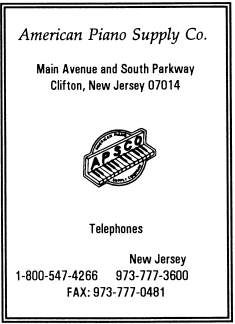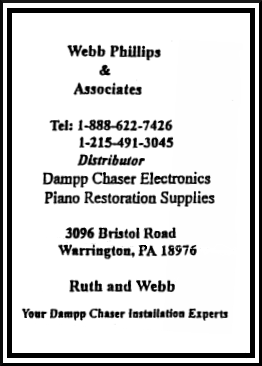|
by Paul Eccardt - Chapter President It seems that the Rhodes piano is making somthing of a comeback. Lately, I've been getting more calls for repairs, and I hear that they're selling for more money (used, of course). Here are a few tips on tuning and voicing. When they are in extremely bad shape, it is often because of owner-attempted repair and/or tuning. The best way to voice the tone bar is to try to find one note that wasn't touched, one that doesn't sound so bad, and adjust all of them to that one by turning those two phillips head screws up and down until they look and sound more even. Sometimes there are a few notes that won't get better no matter how much you adjust them. The tine could be bad even though it isn't broken. You can buy these tines from Fender Rhodes in California. There are only two sizes, long and short; you have to cut them to size. The best way to tune these pianos is by taking off the two bolts on each end and turning the whole electrical insides so it is facing you at a vertical angle. It will stay in this position while you tune the piano. Make a mark next to each tine so you know what note each tine represents if it isn't already done. Pluck two tines at one time as you would playing the notes on a piano to hear the intervals or octaves. The coil on the tine is the tuning adjuster. When you push the coil up and down, twist it at the same time. This will make the movement more slight, and easier to achieve a more accurate tuning. |


|